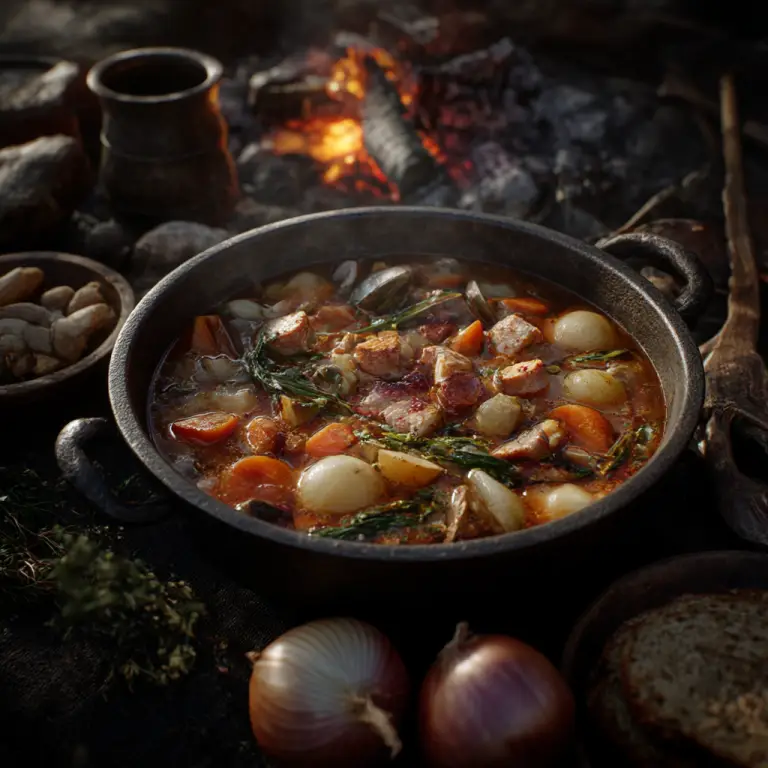Viking Feast Menu: A Taste of Norse Traditions
Viking feasts were a celebration of the bounty of the land and sea. Meals were hearty, simple, and designed to nourish people who lived in harsh climates and worked hard daily. Feasts were often communal, with food shared among family and friends. The following menu combines historical authenticity with practical modern recipes for an immersive Viking dining experience.
Starter: Barley Porridge with Honey and Berries
Begin the feast with a warm bowl of barley porridge, lightly sweetened with honey or fresh berries. Barley was a staple grain in the Viking diet, providing energy for the long day ahead. Serve in rustic bowls for an authentic touch, with a small wooden spoon or ladle.
Main Course: Hearty Meat Stew
The centrepiece of a Viking meal was usually a meat dish. A stew of beef or mutton with root vegetables like carrots, turnips, and onions captures the essence of Viking cooking. Simmered slowly over an open flame or in a heavy pot, seasoned simply with salt, pepper, and juniper berries, it creates a rich, warming dish. Serve directly from the pot to encourage communal dining.
Side Dish: Roasted Root Vegetables
Complement the stew with roasted root vegetables. Carrots, turnips, and onions tossed with butter or animal fat and herbs make a simple yet flavourful accompaniment. Roast until tender and lightly caramelised, and present on a wooden platter for a rustic, authentic feel.
Fish Dish: Smoked or Grilled Trout or Salmon
Seafood was central to Viking diets, particularly for communities near rivers or coasts. Serve smoked or grilled trout or salmon, seasoned with herbs such as dill or juniper berries. Present whole fish on a wooden board to mirror Viking presentation, accompanied by lemon or preserved berries for a tangy accent.
Dairy and Dessert: Skyr or Viking-Style Soured Milk
End the feast with a lightly tangy skyr or soured milk dessert, sweetened with honey or fresh berries. Skyr was a common Viking dairy product, providing protein and a refreshing finish to a heavy meal. Serve in small rustic bowls to reflect the simple style of Viking dining.
Beverages: Ale and Mead
No Viking feast would be complete without drinks. Ale was commonly brewed from barley, while mead was made from fermented honey and water. Offer small wooden cups or horns for an authentic presentation. Non-alcoholic options could include weakly brewed herbal teas or fermented dairy drinks.
Presentation Tips
Use wooden boards, bowls, and spoons for serving. Keep the arrangement simple and communal, with dishes placed in the centre for sharing. Incorporate natural elements such as sprigs of herbs, berries, or leaves to reflect the Viking connection to nature. Candles or open hearth lighting enhance the atmosphere for an authentic experience.
Historical Context
Viking meals were designed to be practical, sustaining people through labour-intensive days while reflecting the resources of their environment. Feasts were social and ceremonial events, with food reinforcing bonds within communities. This menu captures the flavours, techniques, and spirit of Viking dining, allowing modern cooks to experience a taste of the Norse world.
